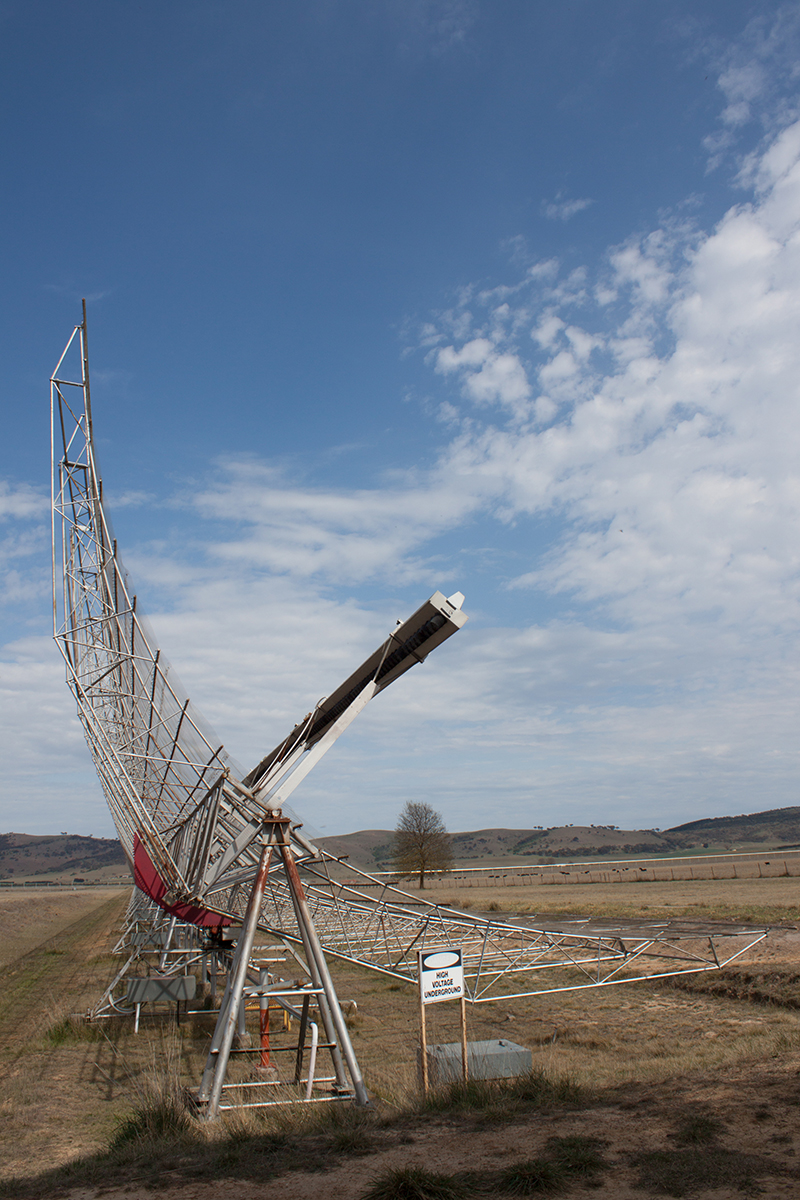Andy Visser
10 May 2019: Experiencing science and how it has shaped Australia’s social and historical landscape was central to the Molonglo Radio Telescope (MRT) heritage and education partnership project assisted by the NSW Government through the Heritage Near Me program.
The project, a collaboration between the University of Canberra, University of Sydney, and Swinburne University of Technology, aimed to complement scientific theory and remote data processing with a tangible experience.
The MRT, also known as Molonglo Observatory Synthesis Telescope (MOST) has been functioning for over 50 years and is operated by the School of Physics at the University of Sydney. It is the largest of its kind in the southern hemisphere and has played a fundamental role in Australia’s global prominence in radio astronomy.
“Australia has a rich history in astronomy and the telescope is significant as a showcase of science from multiple perspectives,” said Dr Alison Wain, Assistant Professor and Lecturer in Heritage Conservation at the University of Canberra.
Two of the University’s Faculty of Education students were responsible for the assessment and development of an education and outreach program.
Christina Starr and Michael Playford developed pilot programs linked to the MOST that would highlight science and astronomy as a stimulating, logical and captivating subject.
“When you arrive at the site, only then do you realise the size and magnitude of the telescope. It is basically a massive metal cross, 11 metres wide and a mile long,” said Mr Playford.

“Being out there with the resident wildlife, a little shed and this huge piece of equipment that has informed science for over 50 years gave me a glimpse into the depth of the history of science in Australia.”
Mr Playford and Ms Starr put together programs for junior and senior school students that would capture their imagination and facilitate engagement. They conducted research into the school curricula from Kindergarten to Year 12, relating not just to astronomy but also to subjects like history and design, to work out how excursions to the telescope could be used to complement lessons.
To determine the viability of excursions to the site, three school trips were arranged. Understanding the educational merits of these facilitated excursions informed the final recommendations of the report submitted to Heritage Near Me at the end of April.
“The group of primary school students was the most insightful for me,” said Mr Playford. “It was amazing to see the children trying to work out how the telescope functions. Their questions were on topic, they expressed genuine interest and it affirmed the educational benefits of witnessing the telescope in action.”
Several practical lessons were incorporated into the excursion assessment process, including the development of a smaller, mobile solar telescope to demonstrate how the MRT works. The mobile telescope was built by the engineers on-site in collaboration with Ms Starr, from materials sourced at little to no cost and completed with a retrofitted antenna. The mobile telescope acted as a user-friendly solution that proved effective in introducing and explaining radio astronomy to students.
“The most common thread of all our conversations during the project was that young minds could be inspired, and their lives forever changed because of the experience of seeing science in action,” said Ms Starr.
The educational benefits of the MRT are extensive and can also potentially inspire other key learning areas such as Maths, English and the Arts.
“There is the opportunity to look at the site holistically across all key learning areas, and in so doing discover the depth of learning that exists,” said Dr Wain.
For example, students could be encouraged to tell stories relating to the site in a way that is engaging to an audience via an essay, anecdotal narrative or video. By making learning authentic – not just a task but an activity that could create resources for other students to share and learn from –deeper meaning and value could be given to the exercise.
“This experience has shown me that the MRT is the pinnacle of science,” said Ms Starr. “It highlights science in its purest form and showcases Australia as a contributor to the advancement of science.”
Four key outcomes were expected from the Heritage Near Me project, including a collection significance assessment and management plan, an interpretation plan, a communications and engagement strategy, and an education and outreach program business plan.
The final report on the project indicates that numerous risks are attached to establishing an on-site educational facility and alternative solutions may be required. Ideas such as bringing the MRT into the classroom environment by using “Education boxes” containing equipment, resources and learning tools that would be age- and year-relevant were among the recommendations made to Heritage Near Me.
While the feasibility and viability of an onsite educational facility at the MOST requires further evaluation and consideration, it is evident that it has immense potential to influence education and young minds today, and in the future.


